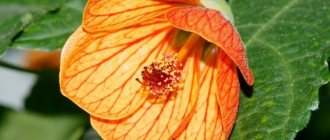Common privet (Ligustrum) is the closest “relative” of lilac. It belongs to the same Olive family, a genus of evergreen and deciduous plants. Privet is a shrub whose height, unlike lilac, never exceeds two meters. Some species grow in the form of trees, the height of which can be quite significant: from 4 meters. The plant is widespread in Europe, Asia, Australia, and North Africa.
Privet is a rather specific shrub. At first glance, this is a very ordinary plant, with small, leathery and dense leaves. But it has amazing properties: it tolerates haircuts well, recovers quickly after it, and at the same time keeps its shape for a long time. All this determined the choice of gardeners: common privet, which is easy to plant and care for, became a favorite plant for forming hedges. It is planted everywhere in central Russia.
Common privet: description
The external similarity between privet and lilac cannot be ignored. It is immediately understandable not only to the experienced eye of a gardener, but also to a person ignorant of plant growing. These two shrubs have very similar leaves and bark, but privet blooms are not nearly as beautiful as lilacs. However, it is often used as a solo plant in landscape design. But here the types of privet that grow more than 2 meters in height are most often chosen.
The leaves of the bush are shiny, dark green on one side, and lighter, matte on the back. The fruits grow as dark blue berries, often with a black tint or completely black. The pulp of each berry contains small seeds in the amount of 1 to 4 pieces.
Privet is capable of creating very dense thickets
Privet blooms not too spectacularly, but for a long time: at least 3 months. The flowers are quite fragrant, but the aroma is less pronounced and attractive than that of lilac. The flowers are white, small in size, collected in panicles 6-18 cm long. Cut branches with clusters of flowers can be placed in a vase with water, and they will last for at least a week without any signs of wilting.
Description of the plant
Privet is an amazing plant that includes different subspecies. Belongs to the Oleaceae family.
This representative of the flora is an evergreen, deciduous tree or bush. They reach a height of 2-6 m. They grow very quickly. They have a beautiful spreading crown and elongated leaves of an emerald hue. The flowers are miniature and very fragrant.
Latin name of the plant: Ligustrum. It comes from the word “ligare” - to tie. This representative of the flora received such an amazing name due to the astringent properties of the bark.
Privet is distributed throughout Europe, Asia and the USA. The plant is planted in greenhouses and botanical gardens of China, Japan, Korea and Taiwan. Professional gardeners love Privet for its unpretentious cultivation and magnificent summer flowering.
Common privet: properties and characteristics
A privet hedge will enhance any area: it will give it a well-groomed and presentable appearance. The plants that make up this landscape composition have special requirements. First of all, these trees and shrubs must be hardy, not demanding to care for, with a lush crown. The common privet and its closest “relatives” meet all these conditions.
[adsp-pro-4]
In nature, privet is most often found in undergrowth. This determined the properties of this plant. It is absolutely unpretentious and can grow on infertile rocky soils. The only thing this shrub may not like is the high acidity of the soil.
Privet inflorescences resemble lilacs, but are less decorative
Privet feels good both under the hot rays of the sun and in the shade. Such qualities as drought resistance and the ability to cope with gas pollution were appreciated by landscapers. And this shrub began to be planted everywhere along roads, forming spectacular living borders from it.
Its ease of care is also reflected in the fact that this shrub does not require shelter for the winter. It tolerates frosts well down to -30°C. And yet, despite its excellent endurance, the decorative properties of privet will be fully revealed only if it is properly cared for.
Few requirements:
- moderately moist soil;
- Soil fertility is average;
- periodic loosening of the soil to ensure access of oxygen to the roots of the plant.
Common privet berries should not be eaten.
Privet will thank you for this with a lush crown and excellent endurance.
Types of Privet
Currently, about 50 different subspecies of Privet are known. The most famous of them are Aurea or Round-leaved privet, or Shiny privet Evergreen or Common privet.
They differ in growth rates, height, and crown shape. Some of the plants are shrubs, others are small trees. All subspecies are endowed with leathery leaves, paniculate inflorescences and berry-shaped fruits.
Common Privet
Common privet (Ligustrum vulgare) is common in the Russian Federation, Moldova, Ukraine, China and Japan. It is a branched deciduous shrub. It can reach a height of 4-5 m. It has elongated oval leaves and miniature snow-white flowers. Very shade tolerant.
Important! Common Privet is the most winter-hardy species. This plant can easily grow in garden plots in the central region of the country. The plant can withstand temperature changes and harsh weather conditions.
See below: Common privet photo
Common privet
Japanese Privet
Japanese privet (Ligustrum japonicum) is native to Korea and Japan. It is an evergreen shrub. Reaches a height of more than 2-4 m. It has a miniature graceful crown, elongated leaves of an emerald hue. It grows very slowly. Shade-tolerant and frost-resistant.
Privet Shiny
Shiny privet (Ligustrum lucidum) is widespread in Asia. It is a small shade-tolerant tree. It has three decorative forms: tricolor tree, variegated-golden and bordered-golden. It has oblong emerald-gold leaves with rounded edges, reaching a length of 10-15 cm.
The panicles of the plant consist of miniature fragrant flowers of a snow-white hue. The length of the inflorescences reaches 15-18 cm. They bloom for 90-100 days. A distinctive feature from other subspecies is its low frost resistance. The plant dies at temperatures below minus 15°C. Therefore, the subspecies is grown as a cover crop in indoor greenhouses or botanical gardens.
The tree can only be grown in open ground as an annual plant. To preserve the root system, it is necessary to use mulching. The plant lends itself perfectly to the formation of living sculptures. It is an excellent decoration for areas. Can be used as hedges.
Privet Shiny
Japanese Privet
Privet Quihou
The Quihou subspecies (Ligustrum quihoui) is a magnificent emerald-colored shrub. Grows up to 2 m. Has an average growth rate. It has miniature hard leaves and large panicles reaching a length of 18-20 cm.
The panicles consist of miniature fragrant flowers. Flowering occurs in the second ten days of August. Only adult plants reaching 7 years of age bloom. The crown is spreading, reaching 160-200 cm. A distinctive feature of the subspecies is the slight pubescence of young stems. Also, pubescence can be observed on the lower leaf blade.
The growing season lasts from mid-spring to mid-autumn. This representative of the flora has an average winter hardiness. The birthplace of the plant is China. The plant grows in a province of China at an altitude of 2500 m above sea level.
Important! When propagating Privet Quihou, it is necessary to use spring or autumn cuttings. It is important that the planting material has time to take root. Summer cuttings root very poorly.
Privet Quihou
Privet roundifolia
Privet roundifolia is also an evergreen shrub. It has beautiful emerald leaves that retain color even in winter. The flowers of the plant are miniature and very fragrant. They have a soft snow-white hue. Flowering occurs in July-August. During flowering, there are a large number of insects near the bush, which are attracted by the aroma of the inflorescences. Moreover, the shrub is a honey plant.
This representative of the flora can actively grow on any type of soil. But to obtain abundant flowering, it is recommended to use black soil. The round-leaved subspecies does not tolerate strong drops in temperature. At a temperature of minus 15°C it freezes completely. Therefore, when growing shrubs in cold regions, it is necessary to use mulching. Experienced gardeners recommend growing this subspecies in closed greenhouses or greenhouses.
Privet roundifolia
Variegated Privet
Variegated Privet is a variety of the Chinese variety. It has elongated, pointed leaves with a gold edge. It will be filled with fragrant faded flowers of a snow-white hue. Blooms in mid-autumn. Formed into clusters. But it is worth considering that only adult plants that have reached 3 years of age bloom.
The subspecies loves plenty of sunlight. Tolerant to pollution and winds. Prefers moderate watering. It responds well to the application of mineral fertilizers. Thanks to fertilizers, the flowering period can increase, as well as the number of inflorescences. It is a fast growing plant.
It can reach a height of more than 2 m. This representative of the flora can be used as a hedge. The variegated subspecies is great for decorating a garden or plot.
Variegated Privet
Privet is a beautiful ornamental plant . Has several varieties. It grows in garden plots, greenhouses and botanical gardens. Some species are successfully used for planting evergreen hedges. This representative of the flora is unpretentious in cultivation.
Withstands temperature changes and prolonged drought. It is a frost-resistant, shade-tolerant plant. Planting and caring for the plant are presented in detail in the article on our website.
Privet: types and their descriptions with photographs
There are more than 50 species of privet. Despite the close family ties, among these plants there are both tall and short representatives. With a spherical and elongated crown, flowering and non-flowering, evergreen and deciduous.
Recently, there has been a noticeable trend of flower growers becoming more interested in growing bonsai. And here, low-growing species of privet, unpretentious and malleable to molding, are ideally suited. In order to choose a plant for your garden or home, you need to familiarize yourself with the most decoratively attractive species.
Shiny privet (Ligustrum lucidum)
Brilliant privet is a spectacular evergreen and long-flowering plant (up to 3 months). Like all its relatives, it is unpretentious and frost-resistant. But during periods of severe cold (from -15°C) it partially sheds its leaves. With the onset of warmth, it quickly restores the splendor of its crown.
[adsp-pro-5]
It blooms in late June - early July, depending on weather conditions and climatic features of the region. It can grow as a shrub or a fairly large tree more than 3 meters high.
“Brilliant” got its name from its glossy rounded leaves. Their shape is elongated, the middle vein is light. The sides of the leaves are raised towards the center and form a shallow depression. The structure of the leaves is dense, fleshy and elastic.
In the photo the privet is shiny
This type of privet, like the others, is shade-tolerant, tolerates heat well, and is drought-resistant. After rain or spraying, the leaves become brighter and shiny, making the plant stand out from the general ensemble of trees and shrubs.
Privet Aureo-variegatum, Aureum, Vicar
Among the privet species there are semi-evergreens, attractive for their short stature and beautiful leaves. These are “Aureum”, “Vicar”, “Aureo-variegatum”.
Aureum is distinguished by its showy golden-green foliage. It is quite frost-resistant, but even in warm winters it partially sheds its leaves. This is a low shrub, notable for its very slow growth rate. The crown is lush and easy to mold. Aureum is a non-flowering shrub. Its decorative appeal lies in its leaves.
Pictured is privet Aureum
Another non-flowering species of privet is Aureo-variegatum. This is a low-growing plant with a rounded dense crown, the diameter of which can reach 120 cm. With a short growth of the bush (up to 100 cm), this variegated, white-green “cap” looks very beautiful.
Vicar is a low plant with a dense crown. The leaves of this shrub are golden, but with a pronounced predominance of yellow. Their shape is round and slightly elongated. By the end of the warm season of the year, the leaves grow up to 6 cm in length.
By mid-autumn they change their color to purple-bronze. At this time, the bush is especially beautiful and spectacular. The maximum height of the Vicar is 1 meter. This type of privet blooms with small white flowers starting in mid-July.
Japanese privet (Ligustrum japonicum)
The name of this plant indicates its habitat. This is mainly Japan. Also found in Korea. A distinctive feature of this shrub is that it is very good as a bonsai.
Pictured is Japanese privet
It is this type of privet that the Japanese prefer when practicing their ancient art of growing dwarf plants. The choice of gardeners is not accidental: the crown of this shrub is incredibly thick and lush. This allows you to give it any shape.
Japanese privet is notable for its frost resistance, slow growth, small, inconspicuous flowers with a very unpleasant aroma.
Oval-leaved privet (Ligustrum ovalifolium)
This type of privet is semi-evergreen. A distinctive feature is a thick cone-shaped crown and a beautiful two-color color of the leaves: bright green with a yellow border along the edges. This shrub is a real decoration of the garden. In the cold season, it partially sheds its foliage, but what remains on the branches is enough to enliven a dull winter landscape.
In the photo, oval-leaved privet
It grows by an average of 20 cm per year. The maximum height of an adult plant is 1 m. The fruits of this plant are black berries and do not appear every season. The crown is thick and dense and tolerates pruning well.
Privet Golden, Silver and Variegated
All these three types of privet are similar in all their characteristics, and differ only in the color of the leaves. These shrubs are no more than 70 cm high and are most effective when pruned to 30 cm. Golden privet has green leaves with a distinct yellow border. The width of the leaves may vary. In regions with a southern climate they are larger, brighter and wider.
Variegated privet is a variety of Qihou. It is characterized by less resistance to cold, a pleasant aroma during the flowering period, and a dense crown. The shrub grows, on average, up to 2 meters. The leaves are oval, light green with white edges.
In the photo, variegated privet
The leaves of silver privet have a wide border of a silvery hue. Like all other variegated varieties, these types of privet fade when constantly in the shade. The leaves become less bright, the border between the middle and the border becomes weakly defined. In such conditions, shrubs gradually lose their decorative properties.
Privet Ibota (Ligustrum ibota)
Privet Ibota is a light-loving and heat-loving plant, up to 2 meters high. Habitat: Japan, China, Korea. This ornamental shrub has a powerful, wide crown, the density of which allows it to be shaped into a variety of geometric and intricate shapes.
In the photo Ibota privet
Attention! Ibota blooms, like most representatives of the species, for a long time, but inconspicuously.
White small flowers, collected in elongated panicles, are almost odorless. The leaves are oval and can grow up to 7 cm in length. The fruits are in the form of berries, inside of which there are a few seeds. Requires shelter during the cold season.
Yeezskaya privet (Ligustrum yezoense)
Sakhalin is considered the homeland of this species of privet. The harsh climate of this island determined the characteristics of the plant: excellent frost resistance, shade tolerance, and unpretentiousness. The leaves of the bush are green, small in size, oval, elongated, dense, and quite rigid. Maximum height 1.5 m. The beginning of the flowering period is the third ten days of August.
Privet (Ligustrum acutissumum)
The homeland of the plant is Southern China. In nature it grows mainly on mountain slopes. This is a tall shrub, the maximum height of which can reach 3 meters. A distinctive feature of this type of privet is that it is heat-loving, so it can die in extreme cold. It does not bloom for long, on average two weeks. The beginning of the flowering period is the end of June.
In the photo, the sharpest privet
Privet (Ligustrum compactum)
Dense privet is a non-flowering semi-evergreen shrub. In nature it can reach a height of up to 4 meters. Under artificial cultivation conditions, it rarely reaches a height of 1.9 m. The growth rate is average. It is distinguished by a wide lush crown. The leaves are elongated, pointed, bright green. The shrub does not tolerate frost well and needs shelter. During the cold season, it sheds its leaves, but large leaves remain on the branches until the next growing season.
Quihoun Privet (Ligustrum quihoui)
The southern provinces of China are considered the homeland of Qihou. The crown is wide, dense, with small and dense leaves. It begins to bloom at the age of 7. By this time it grows up to 2 meters tall. The flowering period is short: no more than 12 days. Young shoots and leaves have a characteristic hairiness. In leaves it is located on the underside. It has low frost resistance.
Pictured is Quihou privet
Characteristics of privet and its varieties
The plant, depending on the species, can be either a shrub or a tree. Ligustrum bushes reach a height of 5 meters, trees grow up to 15 meters.
Privet leaves are oval, elongated, dark green in color. The flowers are small, white, collected in panicle-like inflorescences. The beginning of flowering is June-July, depending on the climate of a particular area. The fruits are small, round, black or dark blue (inedible).
Ligustrum is a rather interesting plant. Firstly, it can be both a tree and a shrub. Secondly, it is a so-called semi-evergreen plant. In colder winters the plant sheds its leaves, but in less cold winters it does not.
There are several main varieties of the plant:
- Common privet (Ligustrum vulgare). Branched, deciduous shrub up to 5 meters high. The leaves are oblong, up to 6 centimeters long. The flowers are white, with a creamy tint, and have a rather pungent odor. It blooms for about a month. Flowering begins in June-July. There are many forms of common privet: golden, yellowish, pyramidal, gray, weeping, etc. There are also several decorative varieties. For example, "Aureum". This is a small, up to a meter tall, non-flowering shrub with golden leaves.
- Shiny privet (Ligustrum lucidum). It is a tree up to 15 meters high. The leaves are quite large, 12-15 centimeters long. Cold-resistant plant, can tolerate frosts down to minus 10-15 degrees.
- Japanese privet (Ligustrum japonicum). Shrub of medium height (up to 4 meters), native to East Asia. The leaves have a rich green color and are leathery. The plant is shade-tolerant and frost-resistant.
- Oval-leaved privet (Ligustrum ovalifolium). A small shrub up to a meter tall. The leaves are dark green, with a cream or golden edge (depending on the shape). The flowers have a sharp, specific smell. The plant does not tolerate cold winters well.
Common privet: planting rules
Privet is not a demanding plant, but following planting rules will ensure quick and good survival.
Gardeners with experience in growing this shrub recommend choosing a bright or semi-shaded place for it. Protection from the north wind will be a big plus. The root system of privet is superficial and fibrous. For good survival of the plant, it is necessary to dig up the soil thoroughly, breaking up all large lumps.
[adsp-pro-6]
The depth of the planting hole should be such that the root ball fits easily and there is still 15-20 cm of free space below.
For backfilling, prepare a soil mixture from the following ingredients:
- 3 parts of turf land;
- 2 parts humus;
- 1 part sand.
If the area where privet is planted has highly acidic soil, add either 100 g of slaked lime or 300 g of wood ash to the soil mixture.
Privet does not like soils with high acidity levels
Then proceed as follows:
- pour water into the hole and wait for it to be absorbed;
- lay up to 10 cm of crushed stone on the bottom;
- pour the soil mixture in a layer of 15-20 cm (you can add 130 g of nitroammophoska);
- lower a lump into the hole;
- cover with soil mixture, leaving the root collar slightly bare;
- water generously with water, with the addition of Kornevin.
Advice! The plant does not require frequent watering. It is only necessary in the first weeks after planting.
In order for the plant to take root well, you need to know when to plant privet. For this purpose, choose a warm but not hot day. Season: spring, summer, autumn, i.e. throughout the growing season. But optimally - in the spring, after the buds swell.
Common privet: propagation
It is not difficult to propagate common privet. You can choose any convenient method:
- Cuttings. The most troublesome method of reproduction, characterized by low efficiency (a little more than 60%).
- Seeds. The most popular method of propagating privet. Cuttings must have at least 2 buds.
- By layering. An effective method of propagating privet. The lower branches are bent to the ground and dug in. Then water it. The next season, the daughter plant is separated and transplanted to another location.
A privet hedge can look very impressive
How to plant privet cuttings:
- In the fall, during the last pruning, the lignified and strongest branches are selected from the cut branches;
- cut the branch so that 2-3 leaves remain on it;
- immerse the cutting in the soil in the selected location;
- cover with a “cup” from a plastic bottle or glass jar;
- leave in this position until next spring.
According to the experience of gardeners, more than 90% of autumn cuttings take root. If the climate in the region where you live is quite harsh, you can use the method of propagating privet by summer cuttings. In this case, they will have time to firmly take root before the onset of cold weather. The optimal length of cuttings is 10-15 cm. They are planted to a depth of 5-7 cm. Watered.
Growing Ligustrum
The plant is actively used by landscape designers because of its decorative effect. Ligustrum is relatively unpretentious, but still requires some care. The plant is propagated by both seeds and vegetative methods.
Propagation by seeds
For large-scale propagation, the method of propagation by seeds is used. However, if you only need to grow a few plants, this method is also quite suitable.
Seeds are taken from ripened fruits. For good results, it is better to use only the largest seeds. Before planting, the selected seeds should be thrown into a bowl of water. Those that float up are not suitable for landing.
Sowing is done in late autumn - early winter. Before planting, the ground must be leveled and small furrows made. Seeds are planted 7-10 centimeters from each other. The depth of embedding is 1-2 centimeters. The furrows are leveled with a rake and the soil is mulched. Seedlings can be transplanted to a new location after 2-3 years. It is advisable to cover young privet for the winter.
Privet can also be grown from seeds at home. Before planting, seeds must be stratified - that is, placed in the refrigerator for a couple of months. Plant the seeds in a loose substrate, one seed for each glass, to a depth of no more than 2 centimeters. The temperature in the room with seedlings should not be higher than 20 degrees. Watering is required, but moderate. For faster growth, you can backlight it. After a year or two, the seedlings can be transplanted to a permanent location.
Propagation by cuttings and layering
Cuttings are carried out after flowering has ended. Choose a healthy, well-developed shoot. The stalk should be about 10 centimeters long. A glass (pot) is filled with turf soil and the cutting is planted in it to a depth of about 5 centimeters. The pot is covered with a jar. The temperature should be 20−25 degrees. Moderate watering is required. Sometimes you need to ventilate the pot. You can transplant it to a permanent place when the plant reaches a height of half a meter.
Sometimes privet is propagated by layering. To do this, the shoot is bent to the ground, an incision is made and sprinkled with earth. The top is covered with moss. After a year, the leash is separated from the mother plant and replanted.
Landing in the ground
To thrive, privet requires nutritious, moist, slightly alkaline soil. Optimal soil composition:
- 50% turf land;
- 30% humus;
- 20% sand.
A hole is dug with a diameter of about 60 centimeters. Depth - a spade bayonet more than the root system of the plant. After planting, the hole is well filled with water. For hedges, holes are made at a distance of half a meter from one another.
Common privet: care
Due to its unpretentiousness, privet does not require careful care and close attention. It is enough to fertilize it with humus in the spring and add a little superphosphate. After which the soil is lightly loosened and watered. These simple steps will be enough for the plant to actively develop and increase its green mass throughout the growing season.
Privet topiary looks very interesting
Care during the season includes weeding, loosening, and infrequent watering during dry periods. If a hedge is grown, humus or compost is laid along the line of the plants, closer to their roots.
Preparing the bush for cold weather begins with snowfall. It is necessary to rake it to the roots of the plant. This is done several times until they are sure that the bush is reliably insulated.
Basic rules of care:
- rare but abundant watering;
- fertilizing with organic matter in spring (1 bucket per bush);
- feeding hedges in spring: 10 g of superphosphate per 1 m.
Common privet: pruning
Privet is the best plant to learn how to prune. It will withstand any experiments, but you need to take care of the shape of the bush, starting from the moment of its first shoots. As soon as they appear, they are shortened by several centimeters, thereby stimulating the growth of lateral branches.
As soon as the new shoots grow 10-15 cm, they are shortened again. This is done during the first two years, forming a lush crown of the bush. Next, give it the desired shape. Privet is a grateful plant. It always responds to care and pleases the gardener with its active growth and lush crown.
We invite you to get acquainted with the intricacies of planting privet. Enjoy watching!











